In this article:
A migraine episode or event is recognized as a vascular headache disorder and often begins between adolescence and menopause (in women) due to the hormonal effects of estrogen.
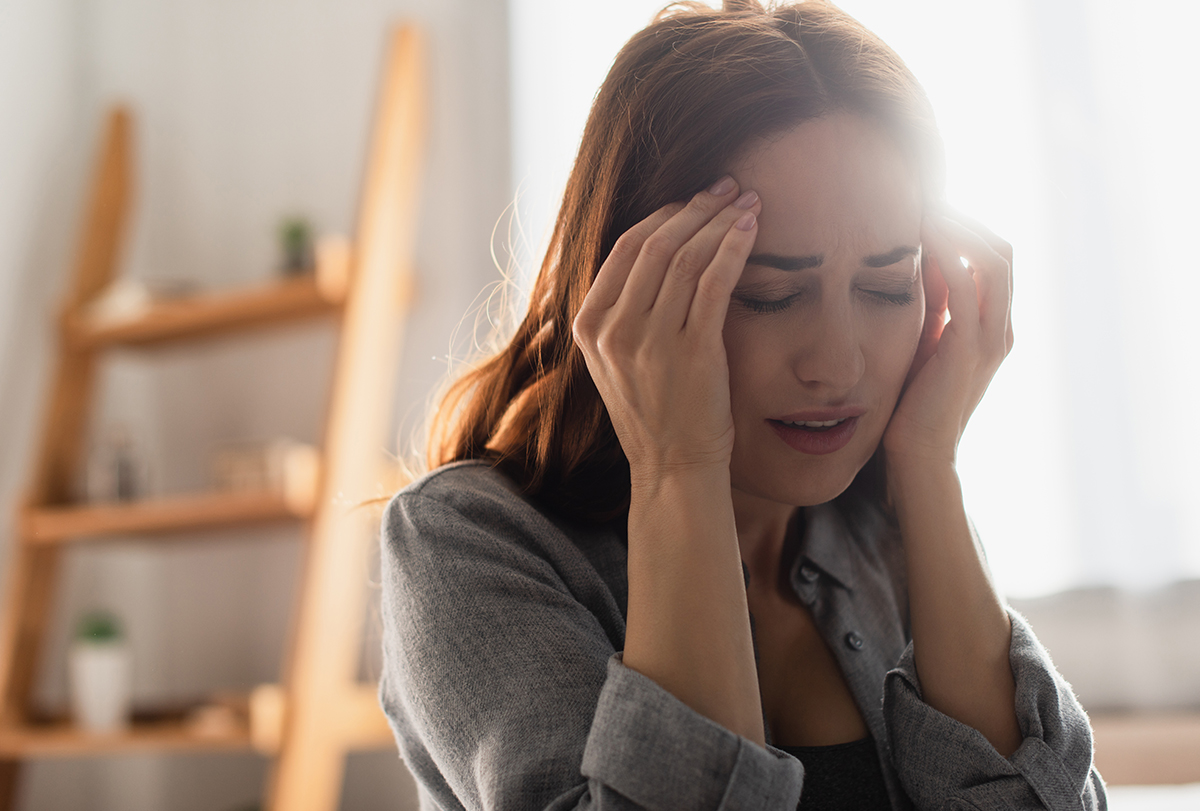
A family history of migraine(s) is also quite common, which indicates that your genes can also contribute to this disorder. Plus, many environmental factors trigger migraine headaches, but these triggers can vary from patient to patient.
Thus, a combination of hormonal, genetic, and environmental factors can lead to the onset of migraines.
Prevalence of Migraine
Migraine is the third-leading illness in the world. Nearly 39 million people in the USA are diagnosed with this disorder.
Most of those affected by migraine suffer such debilitating head pain and neurological distress that they are unable to function properly. No wonder migraine accounts for about 1.2 million emergency room visits annually.
Triggers for a Migraine Attack
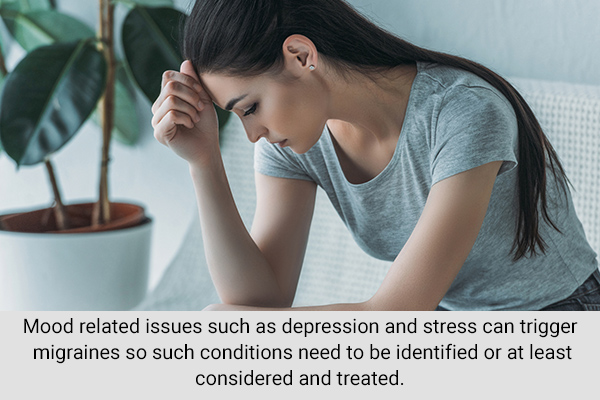
Common triggers for migraine attacks include:
- Sleep deprivation (i.e., not getting adequate or enough self-restorative sleep)
- Missing or delaying a meal
- Certain medications that cause a dilation of the scalp blood vessels (i.e., nitroglycerin)
- Overuse of over-the-counter (OTC) headache medications, leading to a “transformed migraine” (1)
- Bright or fluorescent lights
- Loud noise
- Certain foods (red wine, monosodium glutamate-containing items, dark chocolate, some dried fruits)
- Mood-related issues such as depression and stress, so such conditions need to be identified or at least considered and treated (2)
Home Care for Migraines
Here are a few tips and remedies that you can use at home along with the prescribed treatment to reduce the severity and frequency of migraine attacks:
1. Drink a cup of coffee
Caffeine may help relieve your migraine symptoms to a certain degree. Plus, it facilitates better absorption of your migraine medication into the body so that it can deliver the best results. (3)
2. Apply a cold compress
Wrap a few ice cubes in a clean soft towel, and apply it all over your forehead, neck, or scalp. You can also soak a clean washcloth in cold water, squeeze out the excess liquid, and then place the damp cool cloth on your temples, neck, or scalp.
It’s best to use this remedy while lying down in a dark, quiet room. The topical cold will help shrink the inflamed blood vessels underneath and numb the area to make you feel less pain and discomfort.
This is a great way to relieve aura symptoms, but it only provides temporary results. So, you can reapply the cold compress several times a day until you feel better.
3. Manage your stress
Migraines can be triggered by stress, so it is important to keep it under control. This can be done through yoga, meditation, deep breathing, acupuncture, massage therapy, regular exercise, or simply pursuing your hobbies.
4. Get enough sleep
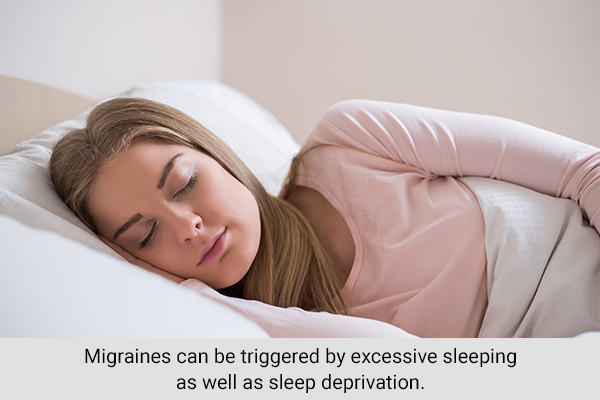
Migraines can be triggered by excessive sleeping as well as sleep deprivation. So, it is important to maintain a consistent sleep schedule, which ensures that you go to bed and wake up at the same time every day. The goal is to get 7–8 hours of restful sleep every night. (4)
5. Massage your scalp
A scalp massage can help soothe migraine symptoms, provided it doesn’t make them sensitive to touch, in which case the massage will only worsen their discomfort.
The application of gentle pressure and topical stimulation helps promote blood circulation in the scalp and relax the underlying muscles to relieve pain.
6. Exercise
Low-intensity exercises such as walking and yoga can help reduce migraine symptoms and attacks.
But you are not supposed to exert yourself during an attack or when you are feeling unwell. Instead, make this a part of your daily regimen to keep migraines at bay.
7. Maintain proper fluid intake
Dehydration can trigger a migraine attack and worsen its symptoms. So, make sure to drink around 8 glasses of water throughout the day to keep your body well hydrated.
8. Dim the lights
Migraine patients often suffer from light sensitivity, which becomes even more severe during an attack. Thus, prolonged exposure to bright light can trigger as well as exacerbate a migraine episode.
You can adopt the following measures to keep that from happening:
- Use dim lights and daylight-spectrum fluorescent bulbs in your living space or office.
- Draw blackout curtains over the windows to keep out the sunlight during the day.
- Wear dark sunglasses when going out during the day.
- Put an antiglare screen over your computer.
9. Try nutritional and herbal supplements

Riboflavin (vitamin B2) and coenzyme Q10 are nutritional supplements that may prove useful in preventing migraines. Magnesium deficiency can also contribute to migraines. So you should consider taking magnesium supplements if you are running low on this nutrient. (5)
Butterbur is a medicinal herb that has helped some people avoid migraines, but it is not safe for prolonged use. Always check with your health care provider before starting any of these supplements.
Treatment for Migraines
People who suffer from frequent or severe migraines require medication to ward off future attacks. But you need to consult your health care provider for the correct choice and dosage of the drug.
The FDA has approved primarily six drug categories for migraine prevention: tricyclic antidepressants such as nortriptyline or amitriptyline; timolol, a beta blocker, although often Inderal is used instead; topiramate; divalproex sodium; and some newer compounds that are taken orally or injected under the skin called CGRP inhibitors. (6)
If the patient is having more than 15 migraine headache days per month (called chronic migraine), then Botox injections can also be considered.
Preventive medications for migraine do necessitate adequate dosing of the medicine to be given for a sufficient length of time to determine their effectiveness. This commonly requires several months of “watchful waiting” to see the hopeful reduction in the severity, duration, and frequency of the events.
Slowly escalating the dosing of the preventive medication may be needed to reduce adverse effects that often are more common at higher daily doses.
Diagnosing Migraine
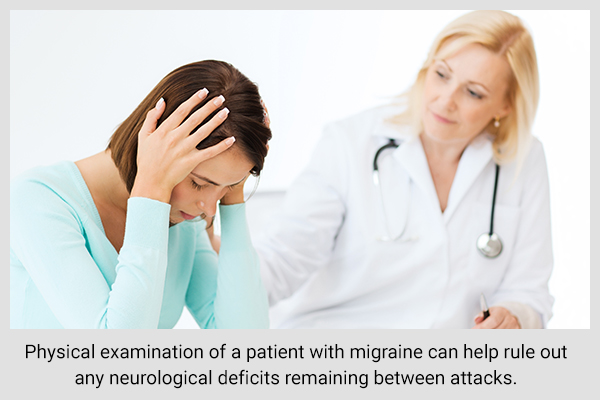
Most migraine patients remain undiagnosed since there is no standardized test for it. Plus, it is so common that people brush it off as normal headaches rather than consulting their health care provider for a proper diagnosis and treatment.
A migraine event is a transient episode based on certain features (symptoms or complaints of the person). (7) The characteristics of what happens (or not) during the episode are very important to determine or support a diagnosis of a migraine event or a migraine headache condition.
In other words, the symptoms come and go and are not permanent. Occasionally, the migraine can persist for up to 1–2 weeks (known as status migrainosus – the term used if the symptoms last for more than 72 hours).
So, doctors generally make a diagnosis through the following steps:
- Inquiring about the headache characteristics and related symptoms
- Obtaining the patient’s medical history (particularly any family history of similar headaches)
- Physical examination of the patient with migraine to rule out any neurological deficits remaining between attacks (8)
- Additional tests such as a head CAT scan and/or a brain MRI (magnetic resonance imaging) (9) – A CAT scan and/or a brain MRI is not necessary to make a diagnosis of a migraine attack (episode). However, these radiographic tests should be considered if a migraine has atypical features or there is a change in the characteristics/features of the episode(s), for example, in hemiplegic migraines where a patient has facial and/or extremity weakness accompanying the episode(s). This is why it is very important to consult a health care provider who can make the decision if brain imaging is necessary or not based on the migraine event(s).
The International Headache Classification system for migraines requires a person to have certain symptoms or features to confirm the diagnosis.
Migraine without aura
The strict definition of a migraine without aura disorder relies on the following factors: (10)
- There are at least 5 headache attacks and each event lasts from 4 to 72 hours.
- The pain is one sided and typically pulsating-type or throbbing-type pain (rather than burning, sharp, or stabbing types of pain) of moderate-to-severe intensity (though bilateral headaches are not uncommon and do not exclude a migraine). (11)
- The migraine pain is accompanied by at least 1 of the following:
- Nausea and/or vomiting
- Hypersensitivity to light (photophobia)
- Hypersensitivity to sound (phonophobia)
Migraine with aura
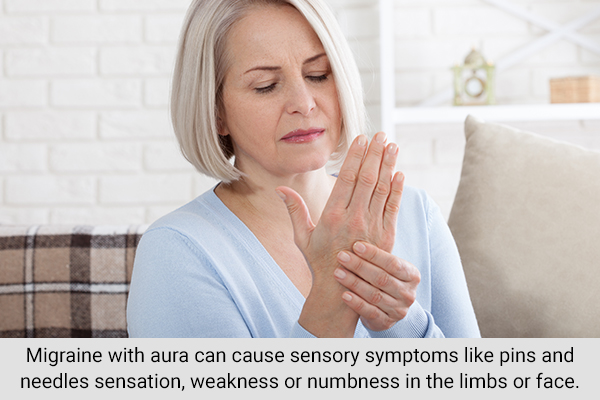
A minority of migraine patients experience certain warning signs called an aura before the headache actually begins. (12) These symptoms tend to continue along with the migraine pain until they resolve completely.
Some common aura symptoms include:
- Visual symptoms such as black or white spots, flickering lights, wavy lines, or even vision loss (blind spots) that starts about 20 minutes to an hour before the migraine pain
- Sensory symptoms such as pins and needles sensation and weakness or numbness in the limbs or face
- Speech disturbance, which entails difficulty putting words together or expressing oneself
- Vertigo
- A feeling of well-being or a surge of energy
- Being excessively talkative or restlessness
- Having an increased appetite
- Feeling drowsy or depressed
- Being irritable or tense
- Nausea and/or vomiting or diarrhea
- Sweaty or cold hands
- Tenderness or pressure in the scalp
- Pale face
These symptoms were thought to be triggered by the shrinking of small arteries that supply blood to particular areas of the brain, but research has shown that an aura is actually the result of transient changes in the activity of specific nerve cells. (13)
Meanwhile, the pain of migraine starts when overactive brain cells irritate the trigeminal nerve, which is responsible for providing sensation to the face and around the eye.
The irritated nerve then releases inflammatory chemicals that cause the blood vessels on the surface of the brain to swell up and send pain signals to the brainstem for processing. This causes referred pain usually around the eye or temple area. In some cases, the pain may even be felt in the face, sinus, jaw, or neck areas.
Once the attack is full blown, the patient often will be sensitive to anything touching their head, called allodynia. Activities such as combing the hair or shaving may be painful or unpleasant during a migraine event.
Final Word
Migraine is a common but debilitating illness that can greatly hamper your functionality and overall quality of life. There is still no permanent cure for it, but there are ways that you can lessen the symptoms and attacks.
The first step is to consult your health care provider for a proper examination, diagnosis, and treatment. You may be prescribed certain medications along with a list of recommended lifestyle and dietary measures.
Over the years, many new interventions have been tested for providing migraine relief with promising results. If your initial treatment doesn’t work, go back to your health care provider for a better alternative.
You may also read these books:
- The End of Migraines: 150 Ways to Stop your Pain by Alexander Mauskop, MD
- Heal Your Headache by David Buchholz, MD
- Was this article helpful?
- YES, THANKS!NOT REALLY


